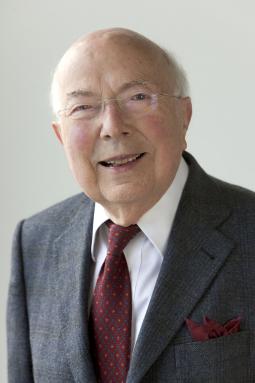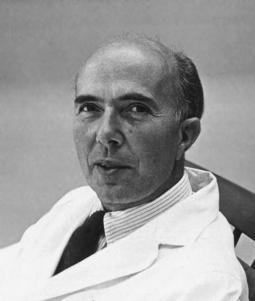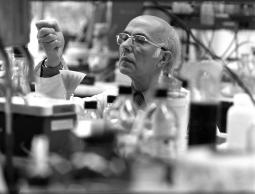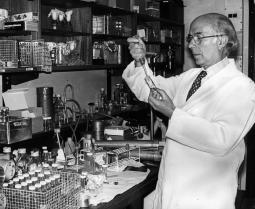Polio Place
A service of Post-Polio Health International
Renato Dulbecco, MD
Born: February 22, 1914
Died: February 19, 2012
Major Contribution:
Dr. Dulbecco, an Italian-born American virologist, worked on methods to culture the viruses. Along with Marguerite Vogt at the California Institute of Technology, he was the first to successfully grow the poliovirus in vitro (“in glass”), purify it (plaque purification) and determine the amount of poliovirus present in a cell culture. This step was essential to the development of the Sabin polio vaccine. Together they also first described how the poliovirus forms plaques in cell cultures. Their research on how a virus can turn a cell cancerous provided some of the first clues to the genetic nature of cancer.
Other Information:
Brief Biography: Renato Dulbecco was born in Catanzaro, Italy, the son of a civil engineer. A tinker, he assembled a vacuum-tube radio so his mother could listen to opera and built a working electronic seismograph. He studied medicine at the University of Turin at 16 years of age and obtained his medical degree in 1936. He stayed at the university until being called up for service as a medical officer in France and then in Russia, where he was injured during combat and hospitalized for several months.
In 1947, Dulbecco immigrated to the United States and joined the laboratory of his Italian colleague, Salvador Luria, in Bloomington, Indiana. From Indiana, he moved to California Institute of Technology, in the summer 1949, where he did his poliovirus work and was awarded a full professorship.
He became an American citizen in 1953.
Dulbecco life was linked to the Salk Institute for Biological Studies for decades. He was a fellow from 1963-1972, and returned there in 1977. (In the interim, he worked at the Imperial Cancer Research Fund Laboratories in London.) During his second tenure at the Salk (1977-1981) he served on the medical faculty of the University of California at San Diego. He was the president of “the Salk” from 1988-1992. In 1992, he was asked by the Italian National Research Council to organize an Italian Genome Project and spent about half of his time in Italy for the next five years. He spent his retirement years in LaJolla, California, home of the Salk Institute for Biological Studies, to “follow the work going on” there.
He was elected a member of National Academy of Sciences, the Royal Society of London, the Academia Del Lincei of Italy and was a recipient of the Lasker award. In 1973 he was awarded the Louisa Gross Horwitz Prize from Columbia University and received the Selman A. Waksman Award in Microbiology from the National Academy of Sciences in 1974.
In 1975, he was jointly awarded the prestigious Nobel Prize for Physiology or Medicine for work concerning the interaction between tumor viruses and the genetic material of the cell. The other recipients were his former students David Baltimore and Howard M. Temin. (See autobiography/biography published in the book series Les Prix Nobel/Nobel Lectures, Editor Wilhelm Odelberg, [Nobel Foundation], Stockholm, 1976 Copyright © The Nobel Foundation 1975.
April 2012/Carol K. Elliott and Joan L. Headley
Major Articles: Renato Dulbecco, MD
Renato Dulbecco, The Design of Life. New Haven: Yale University Press, 1990.
Plaque Formation and Isolation of Pure Lines with Poliomyelitis Viruses. Dulbecco, R. and Vogt, M. Journal of Experimental Medicine, 1954; 99 (2): 167–182.
Production of Plaques in Monolayer Tissue Cultures by Single Particles of an Animal Virus. Dulbecco, R. Proceedings of the National Academy of Sciences, 1952; 38 (8): 747-752.
Recombinations Leading to Production of Active Bacteriophage from Ultraviolet Inactivated Bacteriophage Particles. Dulbecco, R. and Salvador, E. Genetics, 1949; 34(2): 93-125.
Opportunities to Participate in Research
NEW STUDY ON AFM AND POLIO A new study concerning acute flaccid myelitis (AFM... More
Opportunities to Participate in Research
NEW STUDY ON AFM AND POLIO A new study concerning acute flaccid myelitis (AFM... More





















































